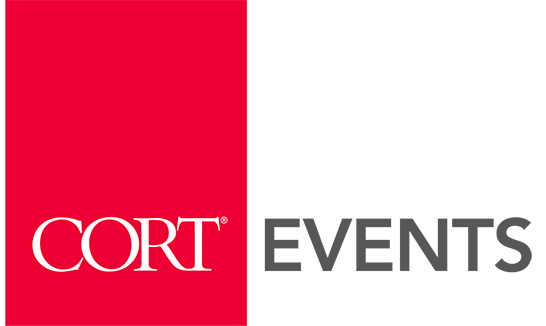In March of 2020, life as we knew it began to change. Schools closed. Lockdowns were enforced. As spring turned into summer, many hoped that the virus would disappear and that life would go back to normal. While it’s true that many restrictions were lifted and many things went back to “as usual,” many industries and occupations had to wrestle with a “new normal” to move forward.
One industry very much affected by the world pandemic is the hospitality industry, including event and event planning. Most areas now allow events of some kind to take place. However, knowing local COVID-19 event laws is vital before you even start thinking about a party theme. With social distancing measures and disinfecting measures in place, it’s possible to adapt, be flexible, and have a great event, even in a post-COVID world. Read on to learn seven tips that can help you bridge the gap.
Know Your Local Regulations
Whether you’re planning a company cocktail party or an anniversary party for your parents, knowing event regulations in your city is a must, particularly if you live in a metropolis. This is because your area may have COVID-19 regulations that differ from state regulations and maybe more strict if you live in an area with a higher population. If you’re unsure, go to your state’s .gov site and follow COVID-19 links that pertain to events. Do the same for your municipality or town. If it’s hard to find the answer, try using Google with the exact question, or call your local town hall. Some municipalities impose harsh penalties for not following ordinances, so always perform this step before any event, as COVID-19 numbers can suddenly spike, and event cap numbers can change.
Design With Six Feet in Mind
Once you know your local laws and regulations, make sure you design the space with six feet of separation in mind. Historically, cocktail tables for events are seated quite close together, or guests eat family-style; similarly, it’s often buffet-style when serving food at events. For now, those two ideas need to be scrapped. Buffet-style poses too many obvious risks, and family-style seating does as well. It’s wise to frame your guest list well ahead of time before designing the space. You’ll want a semi-accurate headcount before finalizing the space, anyway. With this in mind, design two-top and four-top tables by group, six feet apart. This allows a guest and their partner to sit together, or a family of four to dine at one table. These small cohorts ensure better social distancing at the event, as guests must go out of their way to socialize with those they don’t know. If you’re having trouble deciding on the right decorations or furniture, event rental can help with both.
Insure Your Event
Before 2020, it would be a fairly good idea to insure your event. Planning for the unexpected is always a good idea, and you may have insured your event for flooding, earthquakes, or even unexpected cancellation. But events during a pandemic are another matter entirely, and you may want to consider purchasing extra insurance. An event is a big investment, and a global pandemic is very unpredictable. If your venue is unable or unwilling to offer you insurance coverage you due to COVID-19 issues, shops around for a different venue.
Consider Versatile Spaces
It’s perfectly okay to go beyond the ballroom and think of versatile, nontraditional event venues, such as outdoor spaces. Many indoor venues have now incorporated an outdoor area as part of their event space, which (in some states) allows them to bend capacity rules slightly. You can use event rental to set up boxwood hedges outdoors and clear dividers inside to maintain social distancing, some decorations to match your theme, and some outdoor space heaters, and you have a workable venue. Using the outdoor space at a venue (even during winter) may give you the ability to double your capacity, depending on the event, while still being safe. You can also go completely outdoors, depending on the time of year and venue. Museums, universities, and other nontraditional venues also offer options.
You can also make a less versatile space more workable for you. For example, instead of using standard tables and chairs in an event venue, everyone can sit on bean bags or comfortable furniture. If it’s a work event and not a cocktail party and everyone is attending solo, this is a great way to maintain social distancing. Similarly, envision furniture that helps to enforce the six-foot rule but doesn’t make the guests at the party feel isolated from one another. If people attend each department, similarly to grouping families, you can group departments by cohorts. This way, if you need to put more than two at a table, you can, and it still makes sense.
Become More Involved in the Setup
Before, you may have been the go-to person in charge of planning the event, delegating work out to those heading your committees. However, in these unprecedented times, you may have to jump in and get your hands dirty occasionally to ensure that your ideas work. A lot of post-COVID event planning is uncharted territory, and it’s tough to tell sometimes whether an idea will work in reality just because it looks good on paper. You may have to be more than a party planner at times, jumping in and testing things out and seeing what works and what doesn’t. You must be as flexible and versatile as the event spaces you’re considering.
Be Confident in Enforcing Regulations
Not everyone is thrilled with a lot of the new social distancing “rules” and norms — and that’s perfectly understandable—but you must be clear and confident from the outset what your event’s regulations are, and that there is a zero-tolerance policy in those regulations not being followed in the interest of everyone’s safety and well-being. There may be different “rules” and regulations you want to consider for your event. If this is a company-sponsored event, be sure to go over these ideas with your boss thoroughly before this step of the planning process gets finalized. Most indoor events require social distancing and health and safety norms, such as the use of face masks and staying six feet apart. During most events, there will be eating and drinking — it’s common that guests remove face masks while eating and drinking, but they should put them on when they get up from their table or use the restroom.
Requiring temperature checks is also a consideration. An infrared thermometer is a minimal investment, and everyone’s temperature can be quickly checked as they arrive. The Centers for Disease Control (CDC) guidelines recommend that temperature over 100.4 degrees Fahrenheit may be cause for concern, and in this case, that guest would be denied entry.
Contact tracing is a high-tech form of technology that allows an app to show who a person infected with COVID-19 may have come in contact with. If you ask users at the event to agree to contact tracing, they will be easily notified if someone at the gathering tests positive for the virus. On most iOS and Android platforms, the user will have to first turn contact tracing on, but they must also download a free app to enable it. For it to work properly, most, if not all, people at the event should agree.
Flexibility With Hybrid Events
COVID-19 cases can spike and then go back down. Regulations can change often. You may have planned a party for 75 people, only to now have indoor parties in your municipality capped at 25. It may be extremely tough to be flexible and re-plan for these circumstances, but it can be done. If you must go remote, make sure you find a way to have all guests feel included. If your get-together is small, this is probably easily accomplished with a video conference call — even a medium-sized party can likely handle a Zoom or a Google Hangout. If you have a large event that has to go remote last-minute and going to Zoom is going to cause a traffic jam, consider coming up with a quick, creative hashtag, taking to social media, and posting pictures of the fun you’re having at home (with hashtag) or using Facebook Live, for example. If it’s work-related and privacy is an issue, just keep that in mind and broadcast in a closed Group.
If you are hosting a hybrid event, where some are attending in person, and some are at home, this can be challenging. Instead of just broadcasting a feed to those at home, you want to get them involved as well. The hashtag idea is still a valid one — this can keep everyone at home involved also—but you may want to set up a projector with a Zoom of those at home (think similarly to how the NFL is broadcasting fans from home since there’s no one in the stands), so it’s more interactive. If it’s an event where you have a speaker, and there are questions from the audience, be sure not to ignore those at home. Event rental and newer technologies can also help you bridge the gap if you’re struggling to develop those last-minute solutions.
When you want to make your event stand out for design, furniture, planning, and safety, CORT Events can help. From office meetings to elaborate weddings, our designers and stylists can help you realize your vision, even in a post-COVID world.







